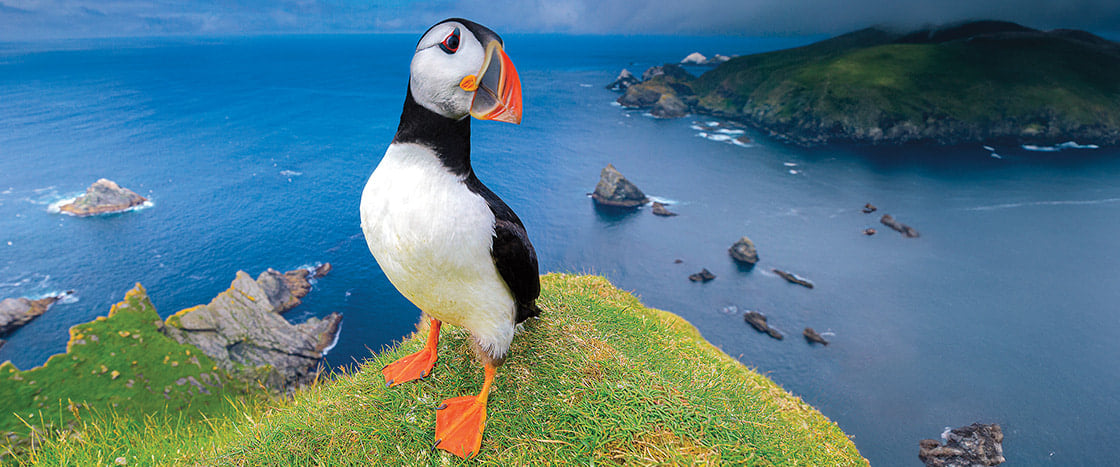A baby puffin is called a puffling.
PAUSE AND THINK: Why is Anton awake?

Baby puffins can get lost on their way to the sea. The Puffling Patrol is here to help.
Learning Objective: Children will understand how a community comes together to save lost baby puffins.
A baby puffin is called a puffling.
Arnar is in the Puffling Patrol.
It is past bedtime on a cold, wet night. But 12-year-old Anton is wide-awake. He is searching the streets of his town with a flashlight. His older brother, Arnar, 14, and his mom are close behind. They are looking for lost baby puffins.
Lost Puffs
Baby puffins are called pufflings. They hatch from eggs every summer on the Westman Islands of Iceland.
When the pufflings are old enough, they fly to the ocean. That is where they will find fish to eat and live for most of their lives.
Pufflings get confused by the lights of the town.
As they fly for the first time, the pufflings use the light of the moon to find the water. But some young birds get confused by the lights of a nearby island called Heimaey (hay-may). They end up on the town streets instead,
lost and scared.
Puffin Town
Found one!
The people of Heimaey love puffins. The whole place unites every year to find lost pufflings that land in their town. Then they help get the pufflings back to the water.
They are called the Puffling Patrol, and people of all ages help. Kids like Anton and Arnar can’t wait to go out at night searching for pufflings.
The Search
Anton holds a puffling.
On this night, the boys still haven’t found a puffling. The little birds land at night, and it is hard to find them in the dark. The pufflings hide under cars and on quiet streets.
“The whole night, you’re just waiting to find a puffin,” says Arnar. “It’s exciting.”
Finally, Anton sees what they have been waiting for—the tiny, fuzzy body of a puffling.
He carefully picks up the puffling. To calm the little bird, he pets its head.
“They are so cute,” says Anton.
Boxes of Birds
The boxes are filled with pufflings!
To keep the puffling safe until the morning, the boys place it in a cardboard box.
“Our record is 36 puffins in one night!” says Anton.
By the time the night is over, the town has boxes filled with the babies.
Puffling Checkup
A puffling gets a checkup.
The next day, the pufflings are brought to an animal rescue center. Scientists weigh them and make sure they are healthy enough to go free.
But the job of the Puffling Patrol kids is not done. Now they must show the pufflings the way to the ocean.
Back to the Ocean
Anton and his cousin Iris set the pufflings free.
Anton and the others take the birds to a tall cliff. The sea is down below. He holds a puffling above the water. Then he tosses it in the air! This helps the bird take off and fly.
“We show them to the sea,” says Anton, “and then we throw them in the air.”
The puffling is now flying away. When it grows up, it will return to the cliffs to have babies. If those new pufflings get lost, the Puffling Patrol will be there to help.
Puffling Checkup
Imagine you are a scientist taking care of pufflings. Check off each step!
Clean the puffling’s feathers.
Use dish soap and water.
Put the puffling in a bowl.
Then weigh it.
Hold the puffling.
Listen to its heart.
Feed the puffling. Give it fish to eat. Yum!
More About the Article
English Language Arts Focus
Comprehension of a nonfiction narrative
Science Focus
Animal behaviors
Social Studies Focus
Community helpers
Implementation
Pairings and Text Connections
Before-Reading Resources
Suggested Reading Focus
Comprehension/critical thinking (20 minutes)
After-Reading Video Read-Aloud
After-Reading Skills Practice